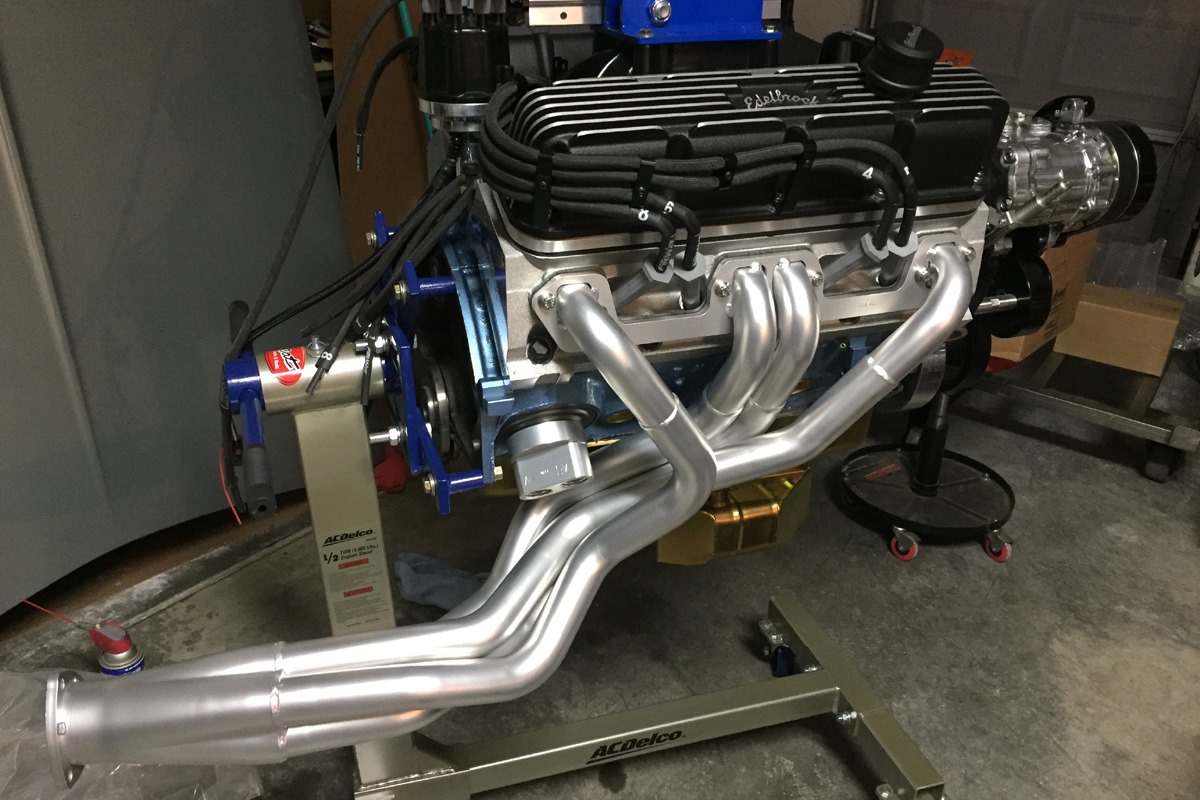If you’ve ever planned out a fresh engine build with all new parts, then you know the joy of getting that new engine back and prepping it to install into your project car. Whether you did a basic rebuild, or you went the whole nine yards and sent the block out to be cleaned and built with all new components, there’s one more component you shouldn’t ignore: an Inline Coolant Filter.
Inline coolant filters, like those we sell here at Champion Cooling Systems, will prevent dirt, rust, and debris in your engine from getting into your radiator, and possibly clogging up the small passages. Anything small enough to pass by the filter will likely pass through the radiator, but particles large enough to clog radiator tubes will get trapped in the filter.
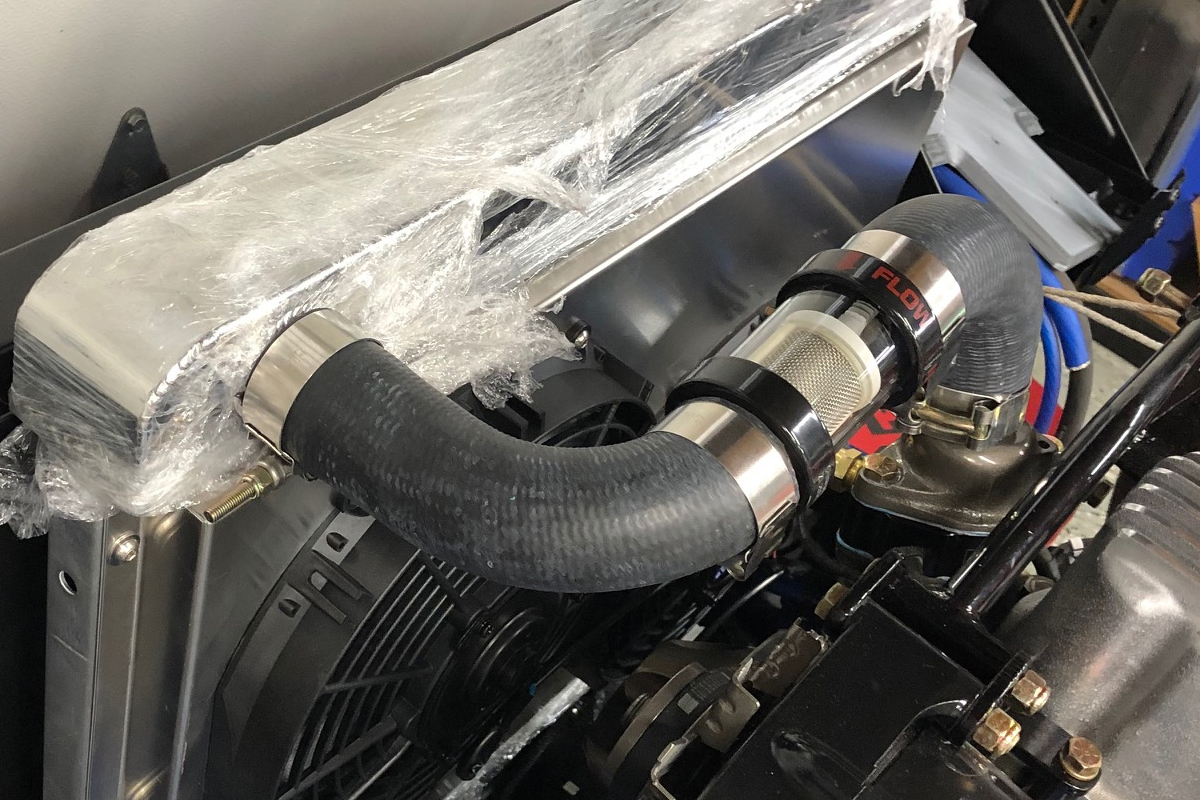 Not only are the filters functional, but they look pretty cool, too!
Not only are the filters functional, but they look pretty cool, too!
As your engine runs, these particles get pushed through the engine and cycled throughout your entire cooling system, and since you can’t see inside your engine without removing a hose and draining the coolant, you won’t know if you’re cycling debris or rust throughout the system until it’s too late.
That’s the beauty of our Inline Coolant Filters: the glass housing allows you to see the condition of your coolant, and just how much debris gets trapped without entering the radiator. When the coolant becomes ‘dirty’, or the filter starts trapping contaminants, it’s clearly visible.
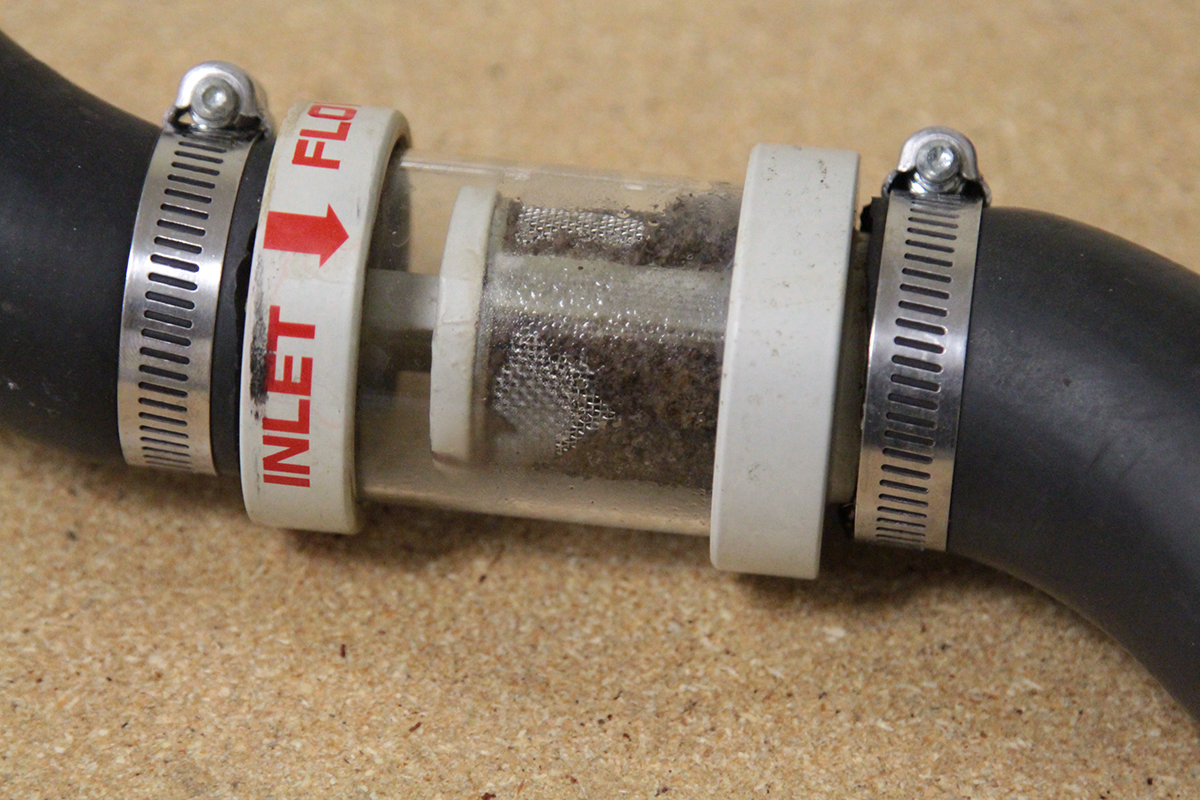
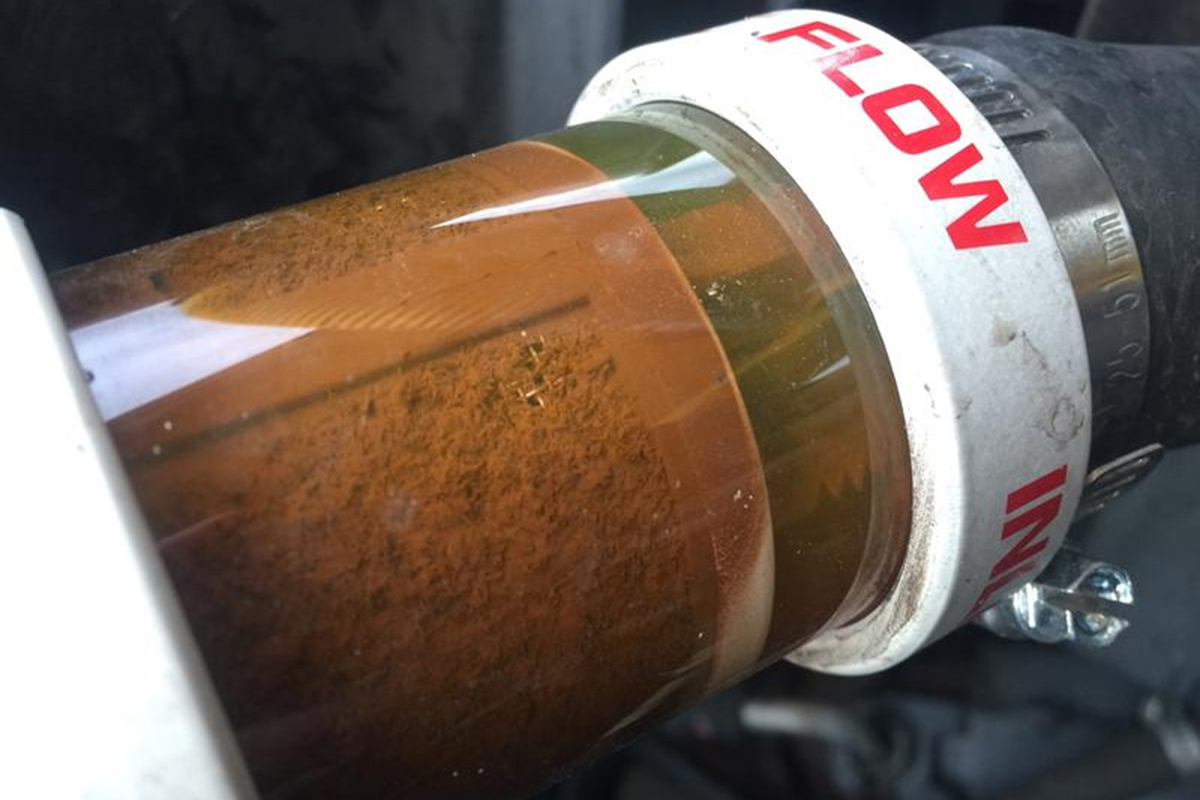 Here you can see the filter when it was starting to get clogged up, and a filter that should have been cleaned a while ago. Never let it get this clogged.
Here you can see the filter when it was starting to get clogged up, and a filter that should have been cleaned a while ago. Never let it get this clogged.
If the filter needs cleaning, simply drain coolant to below the upper hose level, remove the filter and take it apart, and rinse the mesh screen out. It can then be reassembled and installed and put back to work keeping your radiator clean. When the coolant is clean, it’s a neat display when you open your hood at a car show or event.
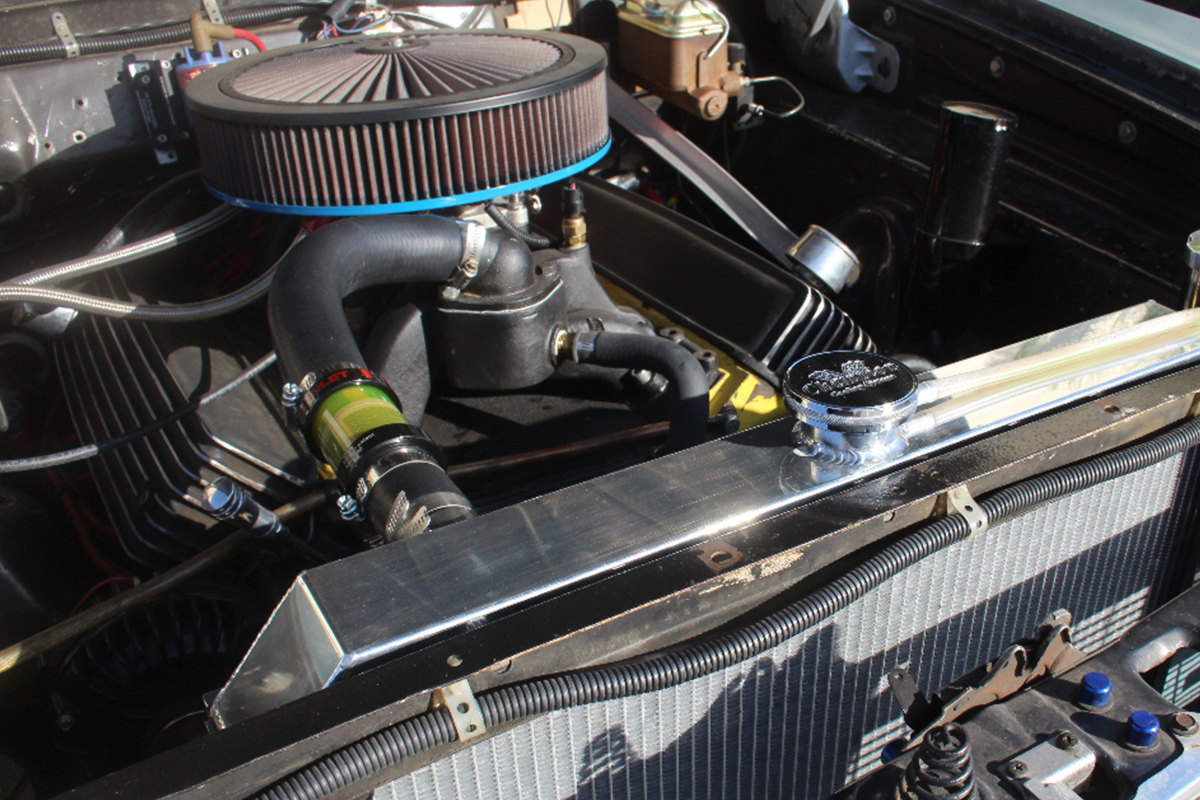 The filter adds a bit of color to the engine compartment, and the contrast is a nice touch.
The filter adds a bit of color to the engine compartment, and the contrast is a nice touch.
Everything Is New, Why Am I Running Hot?
The joy of installing a brand new build into your car can quickly become overshadowed by an overheating issue, which can be especially disappointing if you also installed a brand new radiator. The knee-jerk reaction is that the radiator isn’t doing its one job, but that may not be the case.
Contaminants, such as rust and grime, could have been stuck in the water passages in the block, only to become dislodged after a few revs of the engine with hot coolant passing through. We’ve had customers call us and after going through every possible scenario, the suggestion to remove the water pump and check for a possible pump failure was made.
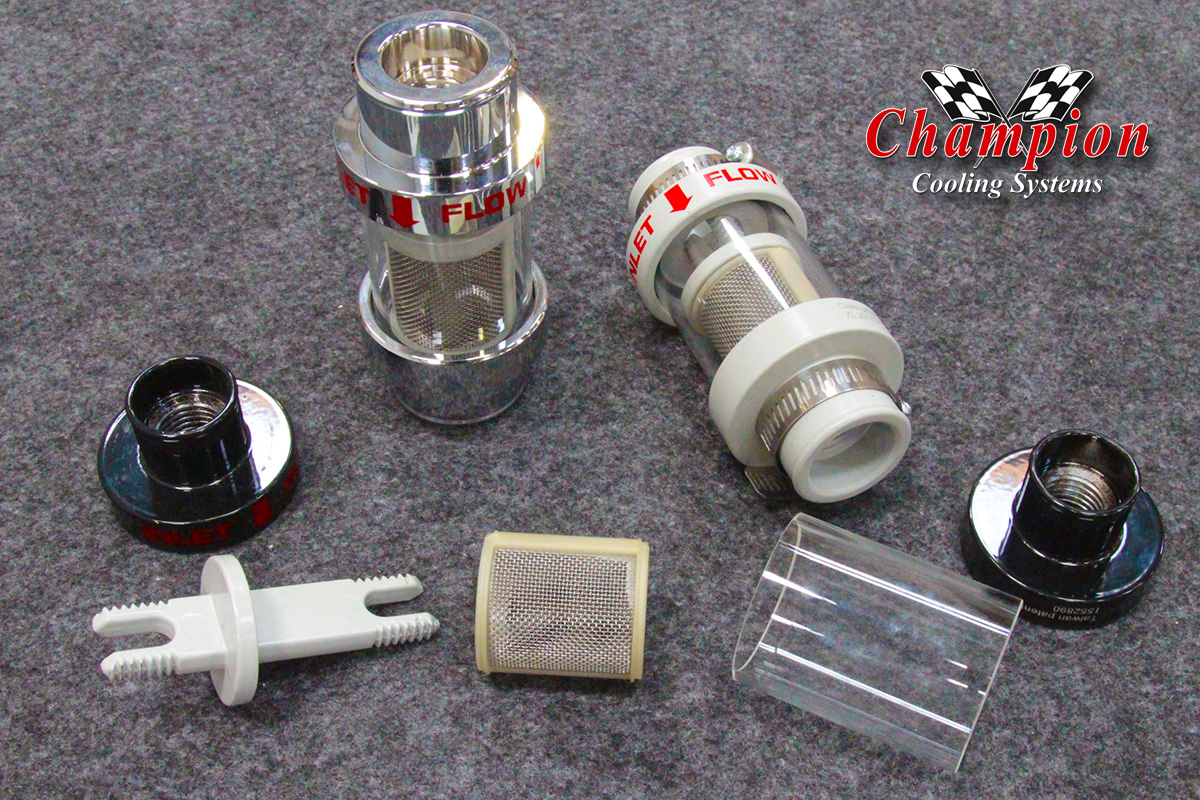 The filter can be taken apart and cleaned. The mesh screen will not rust, and will last a lifetime. It’s available in 3 sizes, in Chrome, Gray, or Black.
The filter can be taken apart and cleaned. The mesh screen will not rust, and will last a lifetime. It’s available in 3 sizes, in Chrome, Gray, or Black.
Much to the surprise of the vehicle owner, a large chunk of rust had made its way to the lower radiator hose, partially clogging coolant flow. After inspecting the radiator itself, the customer found dozens of rust particles sitting in the upper tank. “How could this be,” he thought, “it’s a fresh engine build.”
But as our friend Josh Geiselman at BluePrint Engines tells us, “Stuff happens that is beyond our control or knowledge, and nobody is completely immune to something going wrong occasionally.” Sometimes it’s the error of the shop, other times we get careless and bolt our engine into a car with a dirty radiator; giving your radiator a good cleaning, or replacing it, is also wise investment.
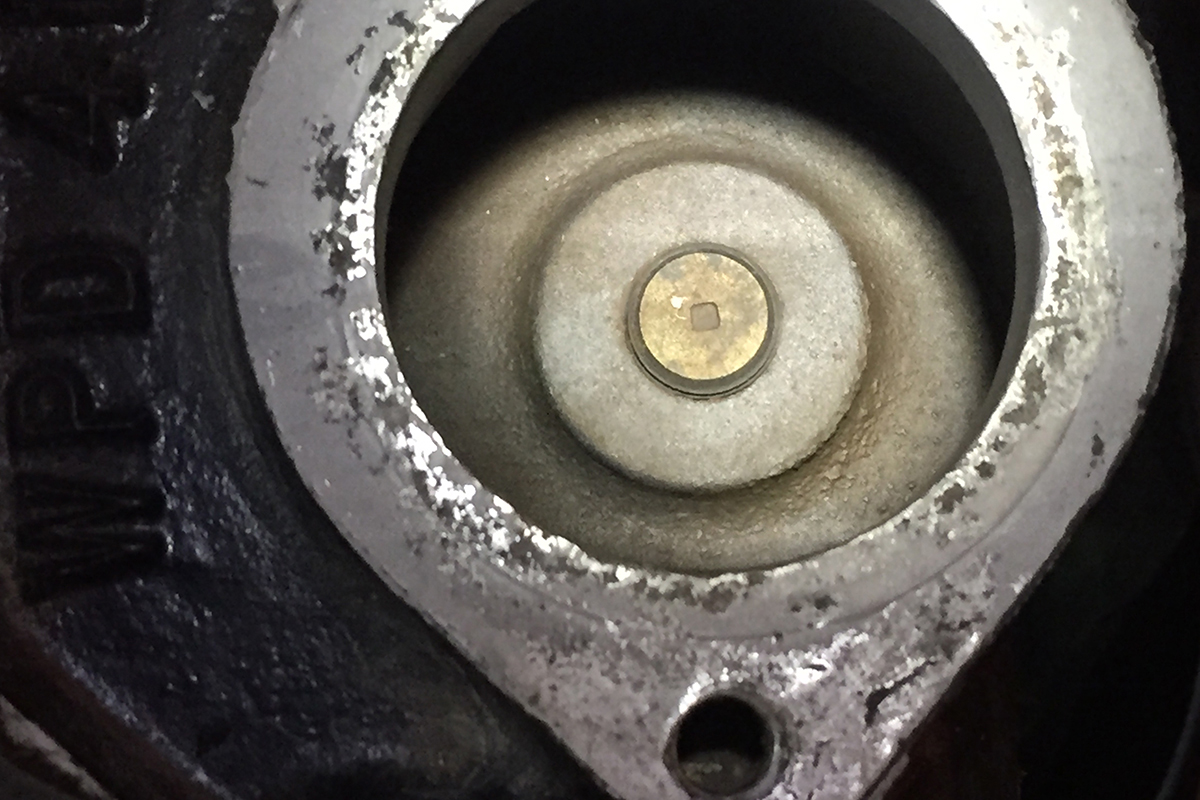 With a clean cooling system, you can expect to keep your components clean. This intake manifold was on an engine for over seven years before it was removed. The coolant was changed every few years, and the result shows it.
With a clean cooling system, you can expect to keep your components clean. This intake manifold was on an engine for over seven years before it was removed. The coolant was changed every few years, and the result shows it.
It’s a shame that all the money and time you put into a new engine can result in finding rust or scale in the block, but it’s sometimes difficult to remove everything. Soaking the block in a hot tank all day might not do the job, and chasing all water jackets might not be something that is done anymore – especially in this day and age where the EPA is cracking down on a lot of shops.
Another unfortunate scenario is when the engine is taken to a shop for a dyno run or it’s put on an engine stand to set base/total timing. If the radiator in that run stand wasn’t thoroughly cleaned out and still had some contaminants in the bottom tank when the hoses were connected, guess what happens?
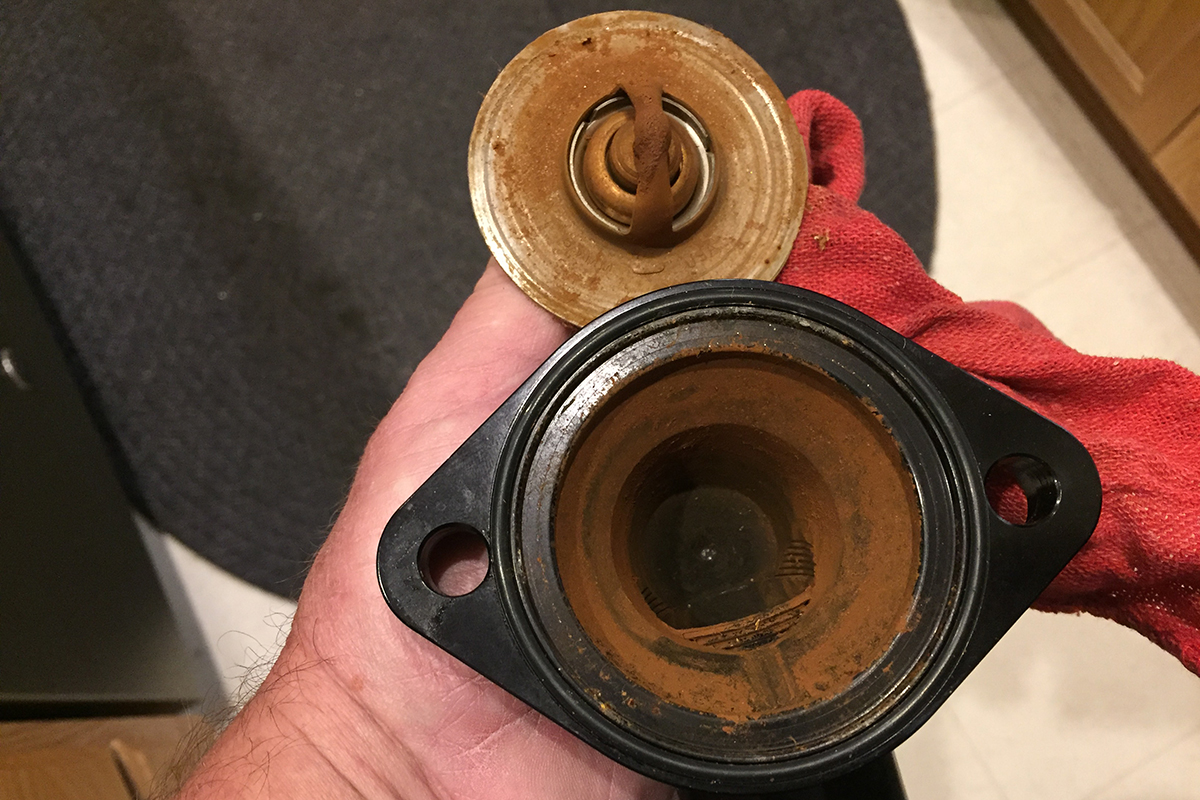
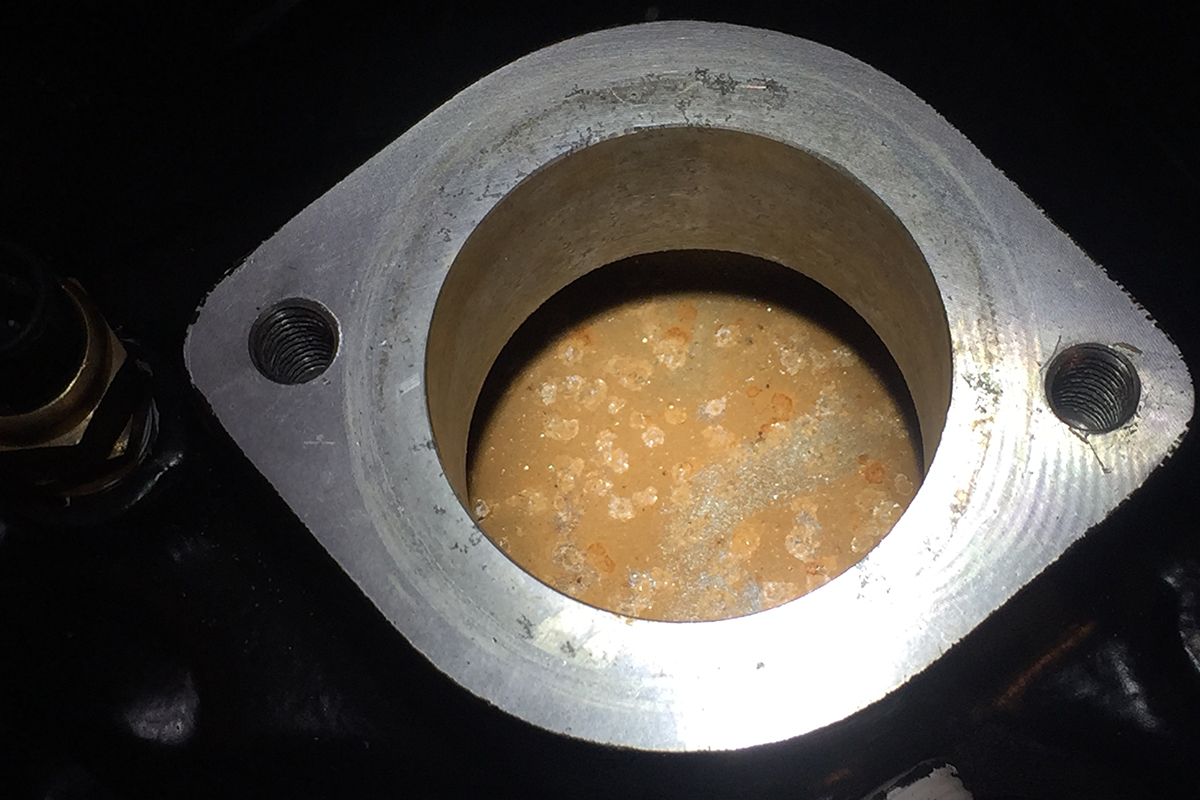 This is the result of a dirty radiator that was connected to a fresh build. The rust and scale from the radiator embedded itself in the new engine and made for a disappointing visual. If this engine had been installed at the shop, it never would have been detected. Fortunately, it was caught and plans to flush the block and clean it up are being made.
This is the result of a dirty radiator that was connected to a fresh build. The rust and scale from the radiator embedded itself in the new engine and made for a disappointing visual. If this engine had been installed at the shop, it never would have been detected. Fortunately, it was caught and plans to flush the block and clean it up are being made.
You guessed right, those contaminants end up in your brand new motor and can completely coat the inside. Now, even more than ever, an inline coolant filter is vital to capture that debris and stop it from entering your radiator.
Josh said that running the engine at temperature with a good system flush, such as BG Products‘ cooling system flush, will help remove any contaminants. It’s not a comfortable feeling, and it needs to be addressed, but Josh warns against tearing down the engine to address it.
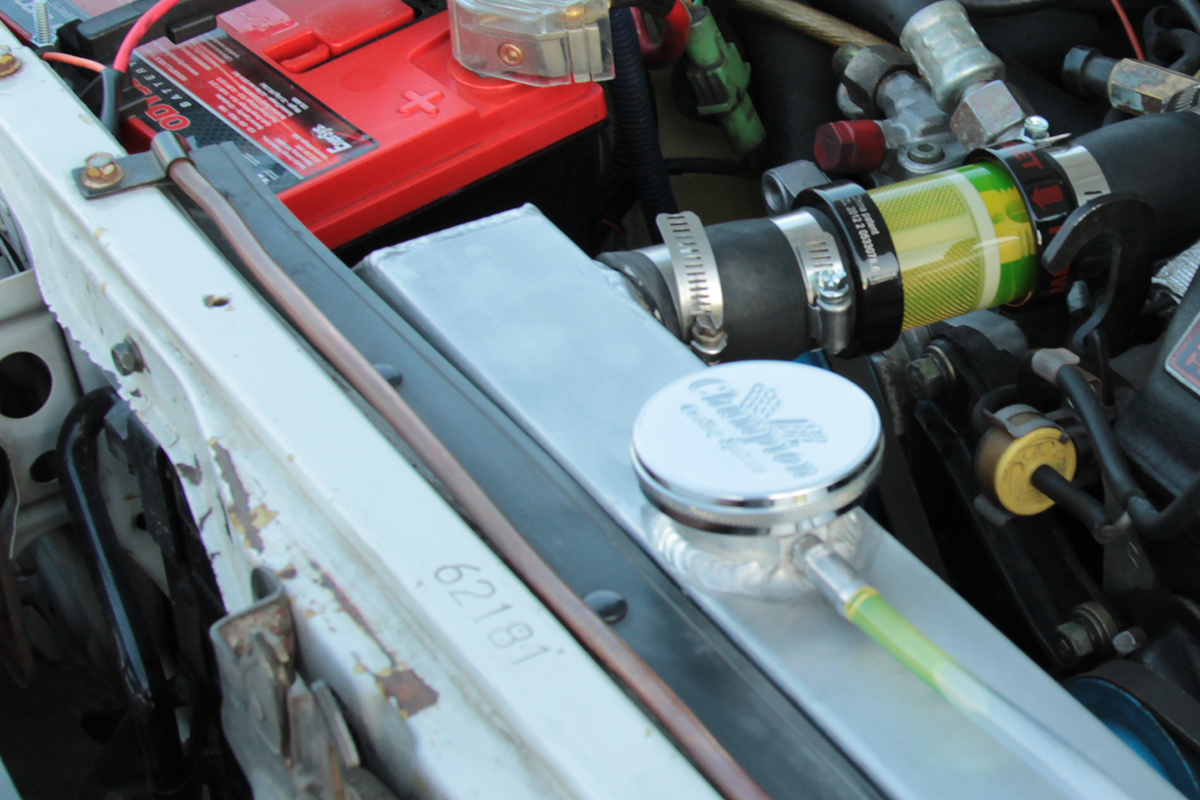
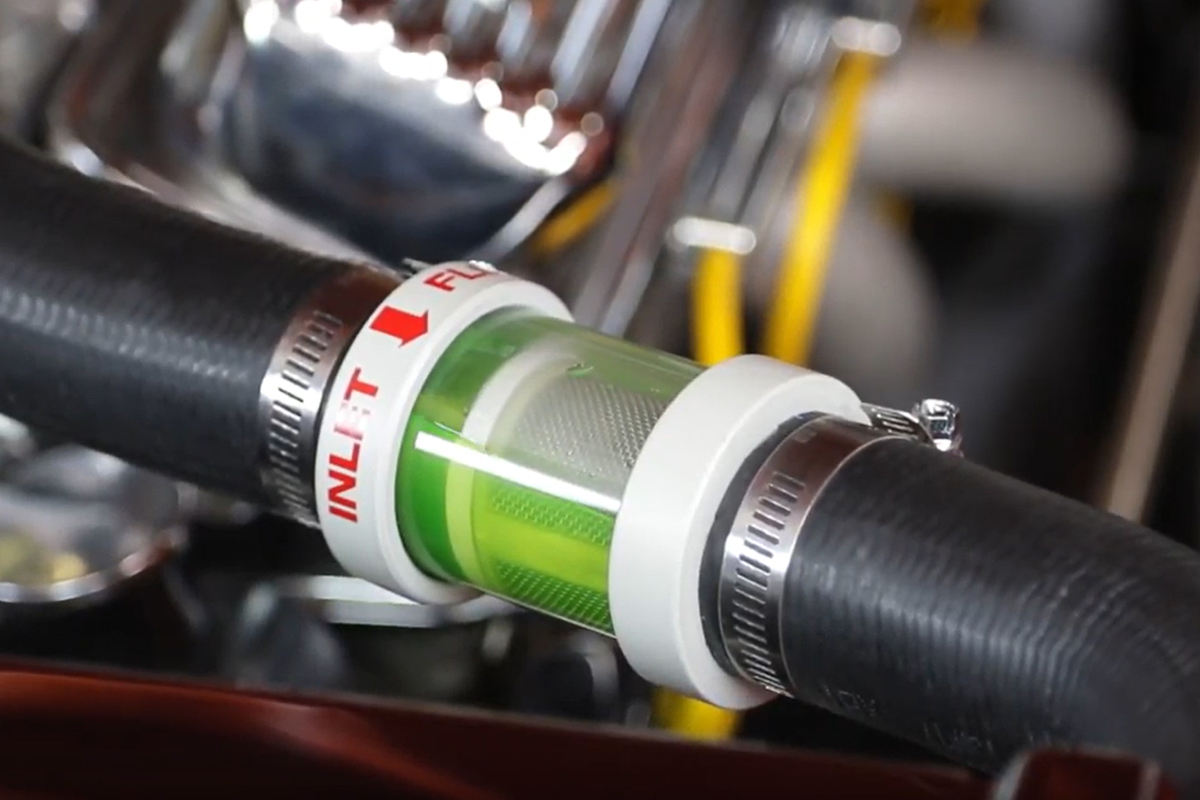 Whether it’s a classic musclecar V8 or a 4-cylinder import, the Inline Coolant Filter can protect your radiator.
Whether it’s a classic musclecar V8 or a 4-cylinder import, the Inline Coolant Filter can protect your radiator.
“You risk the possibility of cross contamination when you tear down and engine that has already been run,” he said. The components are already coated with oil and you don’t want to risk getting fluids into areas where you don’t want them.
This cross contamination could be even more trouble, so always use caution when faced with a situation such as this. That coolant filter can’t stop the rust from being there in the first place, but it can prevent further damage – and keep the particles out of your new radiator.
The video below will give you a glimpse of our Inline Coolant Filter, it simply mounts to your upper radiator hose and is available in three sizes and three colors, to fit and complement most any engine compartment.

